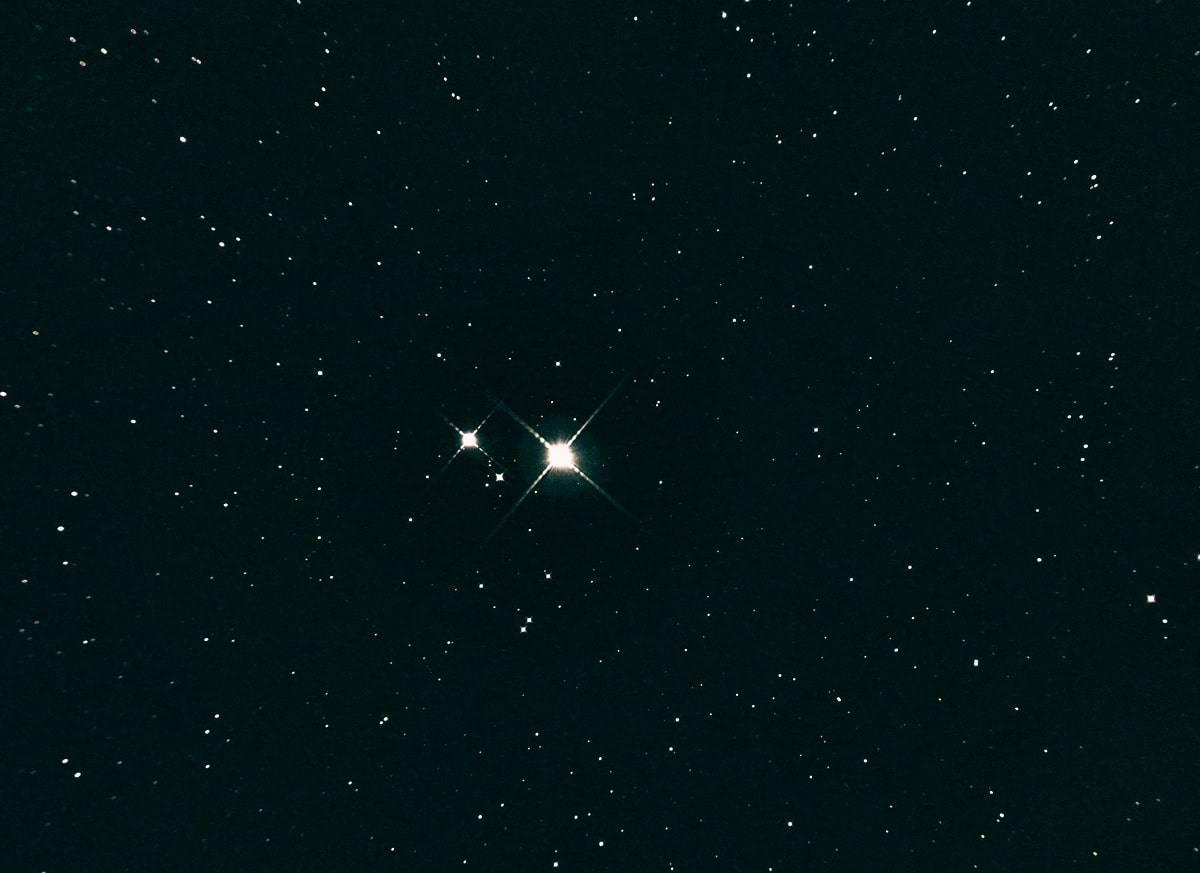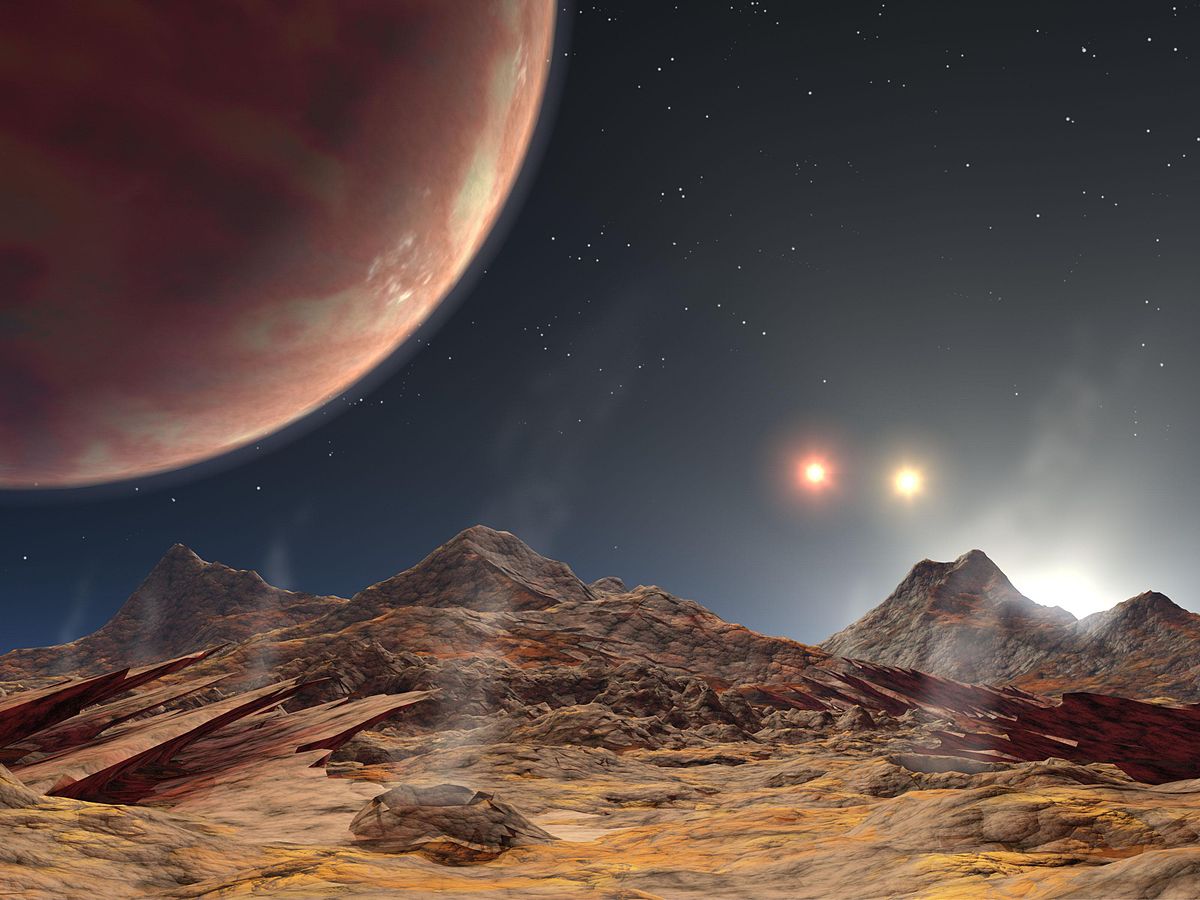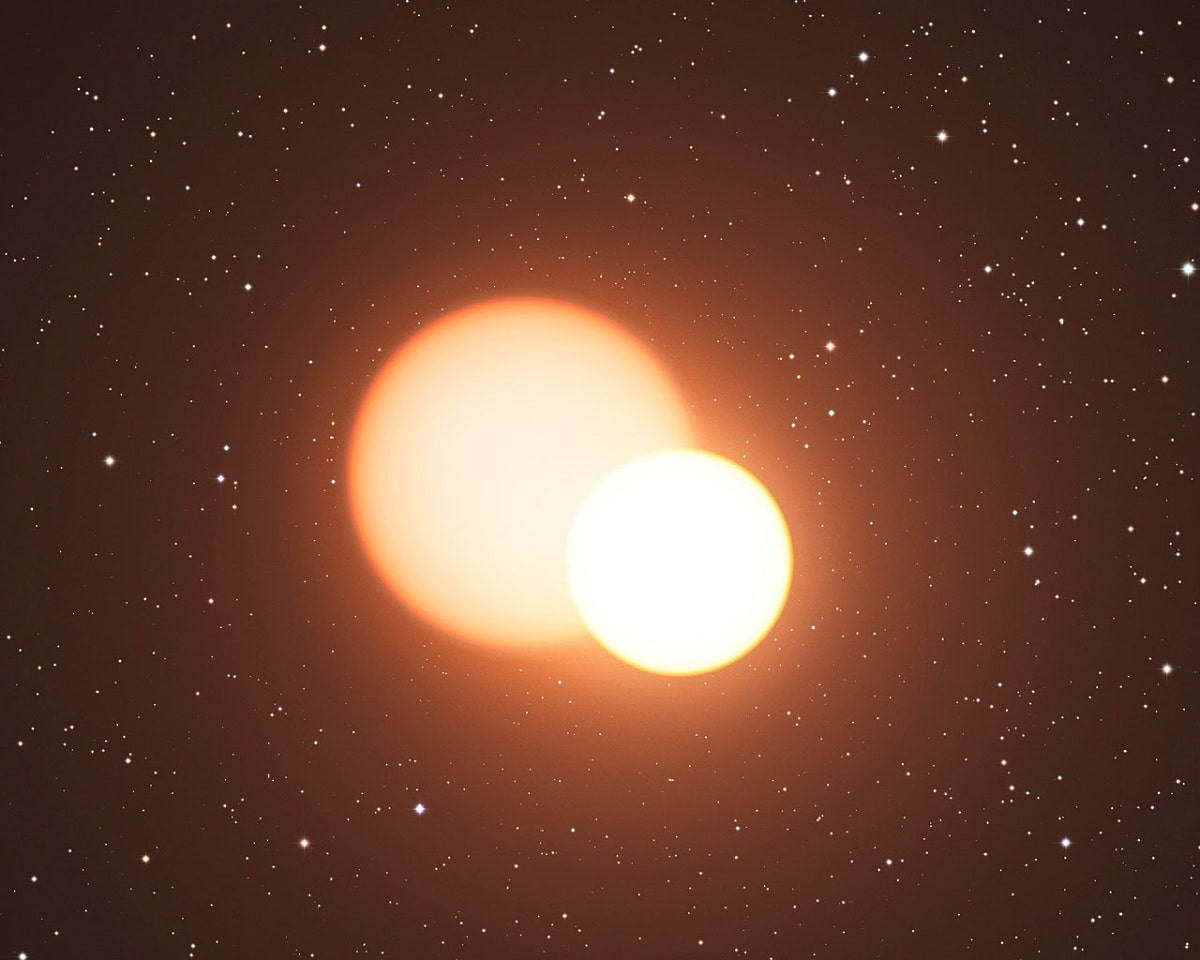
Throughout the universe we know that there are billions of stars. However, there are some known as double stars. The first was discovered by Benedetto Castelli in 1617. He was a disciple of Galileo and discovered these types of stars thanks to the fact that he pointed a telescope at the stars of the Great Bear that in heaven seem very close but are not physically united. Said stars are Alcor and Mizar.
In this article we are going to tell you all the characteristics and importance of double stars.
Key features

When we observe the sky, we go to that of all kinds of stars. We have planets, nebulae, galaxies, clusters, and double stars. To Benedetto Castelli's surprise when he analyzed Mizar, he saw that he has a partner. To this partner it is considered the first binary star discovered. After her, a large number of double stars have been discovered.
To better understand all the physical aspects of double stars, let's see what are the main characteristics. It is convenient to learn to distinguish between optical doubles and physical doubles. The double optics are those stars that seem to be together but only for the effect of perspective. These two stars are not really united. Instead, physical doubles are systems of two or more stars that are physically linked and that orbit around a common center.
For an observer, being able to distinguish well between which are the stars that are really united and which are by an optical effect, is a difficult task. However, it is a fundamental task for astronomers.
Double Star Rating

Let's see what are the main characteristics that make double stars classify. The method to classify them is according to the method that was used to discover them. Let's see what they are:
- Visuals: are those that can be optically unfolded visually or in photography.
- Astrometric: In this type of double star, only one star can be seen, but from its own motion it is deduced that it has a companion.
- Spectroscopic: It is only possible to detect these types of stars by studying their light spectrum.
- Eclipsing or photometric: they are detectable if light variations can be appreciated. These light variations occur when a component passes in front of the partner.
The separation and apparent magnitude of double stars are critical to observation. The angular separation is given in arc seconds and it is the one that indicates the distance between the two stars. On the other hand, the apparent magnitude tells us how bright each star is. The smaller the given magnitude number, the brighter the star is. Furthermore, it should not be forgotten that the observation of these stars is conditioned by atmospheric stability. As well It depends on the quality of the observation team and the place where we are. All these variables are what define the maximum resolution that the telescope can have. The observation of double stars allows you to compare telescopes and thus know the quality of each one.
Some double stars
We are going to make a small list with some of the double stars best known for their color, brightness or history. All those that we are going to mention can be viewed by amateurs. You don't need to be an expert or have great material to be able to observe these precious stars.
Albireo
It is one of the most popular double stars among fans of astronomy. And it is that it has a striking color contrasts since one of the components is orange and the other bluish. It is very easy to locate, being the second brightest star in the Swan. These characteristics make Albireo one of the best known. Unfortunately, recently the Gaia satellite has shown that it is not a binary system, rather it is an optical pair. It just looks like they are visually linked but actually they are not.
Mizar
Earlier we mentioned Mizar as one of the components of the Big Dipper. An observer with good eyesight can perfectly distinguish the central star from the tail of this constellation and will see that it is a double system. Alcor and Mizar are the two stars that move together in space. It is not known with complete certainty if it is a binary system or if it is just an optical pair.
The separation between these two stars is sufficient so that it can be distinguished with the naked eye. Measurements of your distance center these two stars located 3 light years from each other. This distance is too great to think that these stars interact gravitationally. The uncertainty in the measure is so wide that it could be much closer than we think. In any case, Mizar is a fairly easy double system to observe and you don't have to have too much knowledge to do so.
Some binary systems
Polaris
The great Pole Star is a triple system. Polaris A and Polaris B formed a binary system that is quite easy to distinguish with any telescope. There is also another star that is part of the same system known as Polaris AB. This, however, is out of the reach of fans, since it was discovered in 2006 by the hubble telescope.
Beaver
It is another of the brightest stars in the constellation Gemini. It hides a sixfold star system whose two main stars are the most striking and are known by the names of Castor A and Castor B.
Almach
It is the third brightest star in the constellation Andromeda. It is undoubtedly one of the most beautiful and easy to find double stars in the sky. You just have to use a telescope and you can see double system with a large difference in colors. And it is that the main component has a color between yellow and orange and the companion shows a quite contrasting bluish hue. It is similar to Albireo but they are much closer to each other.
I hope that with this information you can learn more about double stars and their characteristics.